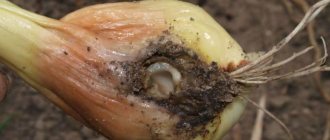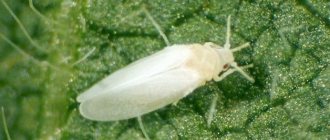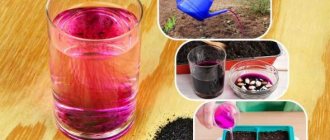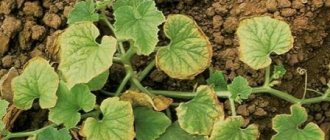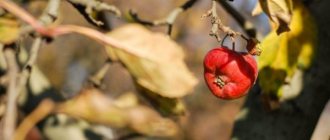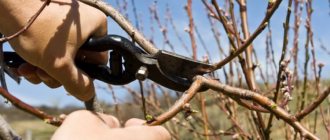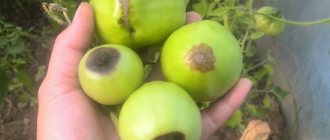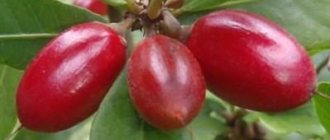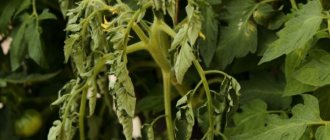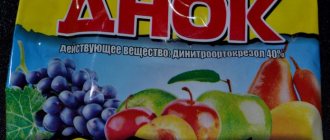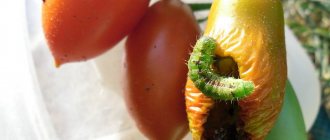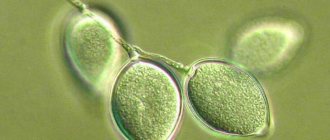Signs of flower damage
It is easy to determine whether a crop is infested with aphids by its appearance:
- the leaves curl up and black spots appear on them (from exposure to sooty fungus);
- buds do not develop, wither and fall off;
- young shoots dry out;
- growths form on the trunk;
- a syrupy trail left by the pest is visible;
- the culture becomes deformed, its growth and development stop;
- insects are visible to the naked eye.
Attention! Pests are easy to spot; to do this, turn the leaves over and inspect the stem. Colonies externally resemble clusters of motes, and the movements of individuals can be seen.
How to detect the presence of a parasite
It is necessary to identify parasites in a timely manner. To do this, you need to regularly inspect the plants. Aphids can be identified by the following characteristics:
- black spots on the inside of leaves;
- sticky layer on peach buds and flowers;
- the presence of dried, curled leaves, small spots may appear;
- insect colonies are visible to the naked eye;
- blood aphids live on the trunk and stems, sucking the sap of the tree;
- the crown begins to fade, the plant stops growing.
On a note! A peach affected by aphids loses its immunity, weakens, and the frost resistance of the plant noticeably decreases.
How to control pests
Having determined from the description which pest - mites, thrips, scale insects or aphids - appeared on the pepper seedlings, we decide what to do first and how to fight further.
First aid for seedlings at the first symptoms
As soon as aphids are found on pepper seedlings, what to do immediately:
- Dilute a spoonful of green pest control or laundry soap in a liter of water.
- Soak a cotton pad in the solution.
- Wipe the leaves and stem on both sides so that not a single individual remains.
This is the first step in detecting all parasites, not just aphids.
Then, every 4-5 days, spray the seedlings with a composition prepared according to one of the recipes (by default the volume is 2 liters, add soap - up to 40 g):
- a tablespoon of regular soda;
- 2/3 cup of ash – daily infusion;
- ammonia - a tablespoon;
- mustard powder – 100 g, three-day infusion (water – boiling water);
- tobacco dust - 100 g in boiling water, spray and water after 4-5 hours;
- hot pepper (chili or any kind of bitter, even ground red) - grind, put in boiling water, use after cooling;
- herbal decoctions: tansy, celandine, wormwood (sold in pharmacies);
- garlic – chop, pour boiling water, process after 24 hours;
By alternating treatments, pests on pepper seedlings are completely eliminated within a month. Other plants in the neighborhood, after inspection and mechanical removal, are sprayed in the same mode.
Not forgetting that ticks and insects are a source of spread of diseases, plantings are also treated with fungicides.
Professional approach
If the peppers have been severely damaged by pests, after mechanical cleaning they use biological insecticides, and acaricides for mites. Insectoacaricides, for example, “Fitoverm” or “Aktofit,” solve the problem comprehensively.
The processing method is the same - irrigation of all parts of the plant. Application - according to instructions.
Heavy artillery against pests
If there is practically no hope of coping with the invasion of parasites, potent drugs are used:
- "Tanrek";
- "Karbofos";
- "Fufanon";
- "Aktara" and others.
When using powerful chemistry, remember the dosages so as not to harm the plants and your own safety.
Video summarizing pest control information:
Yulia Chernyavskaya
The best remedy is prevention
In order not to look for options to combat this insect, regularly carry out preventive treatments in the front garden. To do this, use the following processing schedule:
- after all the foliage has fallen, the peach crop is treated with Bordeaux mixture strictly according to the instructions;
- Before flowering, the peach crop will need treatment with Tizol;
- After flowering, spray the tree with Bordeaux mixture.
It is worth noting that most gardeners advise keeping a drug such as Actofite in a green first aid kit. It is mainly used together with laundry soap as an emergency aid for aphid attacks.
Processing technology
To achieve maximum effect, spraying should be carried out according to the rules. If you ignore them, then all your efforts may turn out to be useless - you will waste the solution, but you will not get rid of the pests.
First of all, in the fall, before spraying, clean the garden - collect and burn all the fallen leaves, and also cut off dry and diseased branches, and treat the cut areas with garden varnish. In autumn and spring, spraying is carried out on a quiet, clear, windless day; make sure that it does not rain during or in the next 2-3 days, otherwise it will wash away the chemicals. If this happens, you need to repeat the procedure. It is advisable to spray in the morning, after the dew has evaporated, or closer to sunset, when the weather is calm. In the spring, during the growing season, if there is no dew at night and your garden is lit, the procedure can be carried out at night. It is necessary to achieve as fine a spray of the solution as possible, while treating the entire surface of the tree: trunk, branches, foliage on both sides.
The ability to start spraying on time by choosing the right preparations can save your peach from death. And knowing the rules of spraying will save you from unnecessary financial expenses for re-purchasing drugs and will help ensure that the peach crop is harvested on time and in full.
Video “Spraying a peach”
This video will show you how to spray a peach.
Growing peaches on your own plot is not the easiest task. Not only is not every region suitable in terms of climatic conditions, but also a variety of misfortunes will periodically try to leave the gardener without a harvest. And in order to ensure a healthy life for a tree, you need to know all possible troubles in person. Controlling diseases and pests is an important step towards a healthy, abundant harvest.
What methods of struggle exist
- agrotechnical and mechanical techniques;
- control with chemicals;
- folk recipes.
Each of these methods can give good results. Moreover, experienced gardeners strongly recommend not to resort to drugs of chemical origin at first, but to try to overcome the invasion with natural and affordable means.
Control method: agrotechnical
As already described above, before arming yourself with a heavy arsenal and attacking uninvited guests, you can try several agricultural techniques that successfully help fight a small enemy, namely:
- destroy all weeds growing around the peach;
- cut out the entire root thicket;
- clean off the remains of old bark on trunks and skeletal branches;
- using a stream of water supplied from a hose, remove all aphids located on the foliage;
- plant green manure and herbs around the peach.
As a rule, these agricultural techniques give effective results. If it was not possible to solve the problem using these methods, then we arm ourselves with mechanical methods and begin to fight.
It is worth emphasizing that mechanical methods of killing aphids can only be used if the tree is relatively small in size. So, how to destroy aphids, methods:
- knock down aphids with a broom;
- destroy with a brush;
- We tear off all the affected foliage and burn it outside the area.
Well, with the onset of autumn, we begin to dig up the area where the peaches are planted. Then, thoroughly sprinkle the tree trunk circle with ash and pour boiling water on top. These methods have the following properties:
We fight with chemicals
If the methods described above do not help, and precious time is lost, you should resort to heavy artillery in the form of insecticides. First of all, it is worth emphasizing that such drugs retain their toxic properties for 20 days. Therefore, in the case when the aphid attacked before the harvest itself, it is strictly prohibited to treat with these means.
Of course, processing with chemicals is not advisable. But if it happened that the army of the most dangerous insect was noticed too late, then only such means can save your harvest.
Well, as for the names of the drugs, today there are a lot of different drugs, among which the following stand out:
- If aphids attack during bud formation, use Confidor.
- In the event that aphids appear during fruit formation, the Bi-58 solution will become indispensable. The only thing to keep in mind is that this product is strictly forbidden to use while peaches are ripening.
- If the black variety of aphids attacks, then the gardener will be helped by the drug Phosfamide.
- Well, to destroy overwintered individuals, a product called DNOC solution is recommended.
At the same time, always remember one simple rule: constantly treating with the same product is not recommended.
Traditional recipes to help
So, what are the ways to kill aphids using improvised means:
Onion peel tincture
Then, the tightly sealed mixture is infused for two days and the finished infusion is sprayed on the peach. This procedure is repeated after two days. But as a rule, after the first spraying, the aphids die or disappear from the tree.
Laundry soap
Pepper
And the third effective method of combating aphids is called assorted peppers. To do this, take a pack of ground red and black pepper and a pack of dry mustard. Mix everything well, just don’t forget to put on a mask and goggles beforehand. The finished powder is poured into a bucket of water and everything is stirred thoroughly.
Then, the resulting solution is sprayed onto the wood. With this product, aphids will begin to die almost instantly.
How to prevent insects from appearing?
You need to start fighting small pests as early as possible. Aphids on peaches spread quickly; there are proven methods of controlling insects: carrying out agrotechnical measures, insecticides, folk remedies and recipes.
We suggest you read: VINEGAR for bedbugs in an apartment - how to treat
It is recommended to begin pest control using a number of agrotechnical techniques:
- Often, aphids move to peach plantings from other plants. Removing weeds growing near the peach eliminates the interaction of infected plants with the peach.
- Planting green manure: spicy and fragrant herbs repel aphids from trees. Dill and mint are enemies for insidious parasites.
- Removal of old bark and mechanical cleaning of trunks from insects.
- Use a jet of water to clear the peach foliage of parasite colonies.
All affected foliage and removed diseased branches are burned. The tree is sprinkled with wood ash at the root. Whitening trunks with lime is a proven way to protect plants from aphids.
Chemicals
The use of pesticides is an extreme measure, but if the plant is completely affected by aphids, you cannot do without them. Treatment with insecticides against aphids can be carried out in three stages:
- early spring - during the period of bud set;
- before flowering;
- after harvest.
It is dangerous to treat peach crops with chemicals during the fruiting period - the harvest reduces its quality, the fruits are not recommended for food within 20 days after treatment.
Chemicals enter the diet of insects along with tree sap. The aphids paralyze, and within two to three days the colonies die out.
Modern chemical plant protection products are varied, their choice depends on the period when the plant needs help and the type of aphid that attacked the plants. During the flowering period, you can use Confidor. Phosfamide will quickly destroy black and white aphids. DNOC will get rid of larvae and overwintered aphids. The dosage of drugs is determined according to the instructions.
Pesticides must be alternated. Aphids quickly develop immunity to the drugs, and the drugs become ineffective.
The use of folk remedies is justified, they do not affect the quality of the crop, the poison does not penetrate the juices of fruit trees. You can use folk recipes at any period of plant development.
The arsenal of folk methods of combating aphids includes:
- Garlic and onion skins. 800 grams of onion peels are infused in 10 liters of water for 24 hours and 10 chopped heads of garlic are added. The solution is filtered and the fruit plants are sprayed with a spray bottle. The effect of the folk remedy can be enhanced by adding half a piece of laundry soap to the solution.
- A mixture of red pepper, mustard and wood ash. Add 1 glass of each component to 10 liters of water, and then spray the plants.
- Infusion of tobacco powder based on laundry soap. One standard bar of soap is dissolved in 10 liters of water and 250 grams of tobacco powder are added. After three days the product is ready.
In the fight of gardeners against aphids on peaches, many methods were born to destroy small pests: Coca-Cola, ammonia, vinegar and boric acid - all means successfully proved themselves in the fight against aphids. The gardener decides on his own how to spray or treat peach against insidious aphids. It is recommended to try several methods to find the most effective one.
Prevention is the best way to control aphids. To prevent the appearance of parasites on peach trees, a number of measures are carried out:
- spring and autumn bleaching of trunks with lime;
- sanitary pruning of old leaves and stems;
- digging up peach trees in a circle and sprinkling the dug surface with wood ash;
- planting fragrant herbs next to peaches;
- treatment with Bordeaux mixture during the period of kidney set;
- removal of anthills from the garden plot. These insects breed aphids and carefully protect them;
- Ladybugs feed on aphid larvae, and the presence of these insects on peach trees is an effective way to control pests.
You can protect peaches from aphids through comprehensive preventive measures and regular inspection of trees for pests.
Healthy peach trees are a gardener's dream. If plants are attacked by aphids, this is not a disaster. A disease detected in time is always treated; many methods of pest control have been invented: from folk remedies to chemicals. The main thing is to carry out preventive measures in a timely manner.
Set of preventive measures
To protect the tree and crop from aphid attacks, it is necessary to carry out timely prevention:
- In autumn, clear the tree trunk area of leaves, weeds and plant debris.
- Dig up the soil thoroughly.
- In the spring before sap flow and in the fall after leaf fall, treat the tree with Bordeaux mixture.
- A month before the onset of frost, whitewash the trunk. Before whitewashing, clean the trunk of lichen and moss with a wire brush or wooden scraper. Treat the damaged bark with iron sulfate and cover it with garden pitch.
- Perform sanitary pruning in a timely manner.
Agrotechnical methods for controlling aphids on peach
You can get rid of aphids on peach mechanically if the tree is small. Kill aphids with a stream of water, sweep them away with a broom or brush, and pick off the affected leaves.
- In late autumn, dig up the soil around the peach, sprinkle it with a thick layer of ash, and pour hot water over it. Aphids lay eggs under the bark, at the bottom of the tree. Hot water destroys the larvae, preventing them from developing. The ash penetrates the tree sap and saturates the peach with bitterness. The ash does not affect the quality of the fruit or the taste, but makes the tree unattractive to aphids.
- Plant dill in the garden. Umbrellas attract ladybugs and some types of bedbugs, which are natural enemies of aphids. Peppermint bushes and calendula are planted around the tree. These plants repel aphids with their scent.
Tie the peach trunk with a protective polyethylene belt and coat it with resin. The belt prevents ants from reaching the upper branches, which spread aphids throughout all the trees in the garden.
When black aphids appear on a tree trunk, there is no need to immediately use chemicals. Since this can harm the plant and cause damage to the harvest.
Experienced gardeners recommend using one of the mechanical methods of pest control:
- Washing off aphids with water. Initially, the tree trunk circle is cleared of weeds, and the trunk and stem branches are cleaned. Next, a powerful stream of water is directed at the crown of the tree, thereby washing away numerous insects.
- Planting aromatic plants in the tree trunk. Peach aphids do not tolerate strong odors. Aromatic herbs will not only get rid of insect pests, but will also be an excellent prevention of many diseases. You can plant mint, calendula and marigolds around the peach tree. Planted dill will attract ladybugs, which will happily destroy the tree from aphids and other insects.
- In case of mass infection, it is necessary to promptly remove and burn the affected leaves.
- You can protect the tree from insects with a resin belt.
- A month before the onset of frost, the tree trunk circle is sprinkled with wood ash and spilled with hot water. Dissolved ash, penetrating the root system, oxidizes and repels peach aphids. Hot water also destroys insects overwintering in the soil and tree bark.
If the mechanical method does not give the expected result, you can use the chemical method. But it must be remembered that chemicals cannot be used during the fruiting period.
Folk recipes
Folk recipes for pests
You can fight with folk remedies at any time during the peach growing season:
- An infusion of onion peels repels insects with a pungent odor and allows you to get rid of pests in 1-2 procedures. Pour water over the onion skins and boil for 20 minutes. Leave to infuse under the closed lid for 5 days. Strain, add laundry soap. It is necessary to prepare the required amount of the drug immediately; diluting it with clean water is not recommended. Spray the peach with a garden spray bottle.
- Grind a glass of garlic, pour 1 liter of cold water. Insist for a day. Dilute with water to the required amount, add 100 g of laundry soap.
- Mix cinnamon, mustard, red and black pepper, salt, baking soda, and wood ash in equal proportions. Separately dissolve 200 g of laundry soap in warm water. Combine with the rest of the ingredients, add 9 liters of water. Spray the peach with a spray bottle. Repeat the procedure a week later.
- Dissolve 200 g of tobacco powder in 10 liters of water. Leave for 3 days. Add soap base.
Remedies for aphids on peach according to folk recipes get rid of pests within a week, subject to careful processing. The procedure is carried out twice.
Other popular means:
- ammonia;
- soda;
- milk and iodine;
- Coca Cola;
- vinegar;
- celandine;
- vodka;
- Green soap;
- Birch tar;
- boric acid.
Aphid. How to get rid of aphids? Methods for controlling aphids
First of all, as has already been emphasized, you can see a colony of aphids, most often on the back of a leaf, with the naked eye. The plant soon becomes deformed, the leaves and top curl. All decorative properties disappear, and then a sticky discharge appears due to the spread of a parasitic fungus.
Most gardeners get rid of peach aphids using traditional methods. This method does not harm the plant, does not require additional costs, and can be used even during the formation and ripening of fruits.
Homemade recipes for getting rid of black aphids on peach are used not only by experienced gardeners, but also by amateurs:
- Onion broth with laundry soap. The collected husks are poured with water at the rate of 1:5 and boiled for 20 minutes. Next, the infusion is covered with a lid and left to infuse for 3-5 days. Before use, add grated laundry soap to the strained infusion. Spraying the crown is carried out with a clean, undiluted infusion.
- Garlic infusion. Chop 300 g of garlic and add 1 liter of water. Leave for 24 hours to infuse. Next, add ½ piece of crushed laundry soap. The resulting infusion is diluted with 5 liters of water and the plant is processed.
- Spicy mixture. To prepare a healing medicine you will need in equal parts: cinnamon, pepper, mustard, salt, soda, wood ash. The prepared ingredients are poured with water, grated laundry or liquid soap is added and everything is thoroughly mixed. The resulting solution is diluted in a bucket of water and the processing of the peach begins. Spraying is carried out three times with an interval of 7 days.
- Tobacco infusion. 250 g of tobacco is dissolved in a bucket of water and left to infuse for 3 days. Add a soap solution to the prepared solution and begin treating the infected tree.
- Ammonia. Dilute 2 tbsp in a bucket of water. l. ammonia and add 1 tbsp. l. washing powder. Mix everything thoroughly. The wood is treated twice with an interval of 7 days.
- Infusion of citrus peels. Citrus peels are added to water and left for 3 days to infuse. The infected tree is treated with the strained solution in the morning or evening hours.
Leaf aphid
Leaf aphids (also called grass aphids) are dangerous because they suck the juices of plants, and their peak activity occurs on the hottest days of summer. Settling, like other aphids, on the lower part of the leaf, this aphid is practically invisible until the plant is covered with black mold. Leaf aphids are famous for the fact that their colonies are grazed by ants, dragging the clumsy insects onto fresh areas of the leaf and collecting the honeydew secreted by the aphids.
Wingless females, growing to just over 2 millimeters, have a brilliant lemon color; winged ones are not so noticeable with their brown bodies.
Aphids overwintering in the form of eggs are ready to produce offspring within a week and a half after hatching.
So, 1.5 weeks after its birth, the aphid begins to produce new offspring. The first queen does not need to mate, and individual nymphs turn into winged ones, setting off in search of new places for the colony. In five days of life, one female can lay more than a thousand eggs. Several population cycles (sometimes up to 50) are reproduced in this way until the first males appear by the end of the growing season. The final mating occurs and the fertilized eggs remain to overwinter.
With such a rate of reproduction, it is not surprising that leaf aphids can spread over vast areas over the summer.
They cause the greatest harm to young trees, sucking out large quantities of sap, while simultaneously poisoning the plant with a special poison, leading to curling of the leaves and subsequent deformation of individual branches. In the most advanced cases, the tree crown dries out.
Characteristics
The most dangerous species is the blood aphid. Insects not only eat leaves, buds and flowers of plants, but also suck out nutritious juices from tree trunks. The plant loses strength and energy, and the future harvest is at risk.
The large peach aphid, like other species, begins its spread from the inside of the leaves, then spreads to the branches and trunk of peach crops. If there are a large number of colonies, the crown of the tree begins to dry out and wither, and the top of the plant may die.
How pests get into an apartment
The answer is obvious: we ourselves bring the infection into the house. Experienced gardeners, preparing for sowing, must treat:
- seeds - prevention from pests increases resistance, and treatment against infection increases resistance to viruses that aphids and “associates” introduce to crop plants;
- soil - contaminated soil is the most common reason why pests attack seedlings: warmed larvae wake up and attack seedlings;
- planting containers, tools - many viruses on the remains of the earth wait for favorable conditions for years.
How to protect pepper seedlings from danger:
- Read about seed treatment here;
- the planting mixture is calcined for 20-30 minutes at a temperature of at least 100°C;
- poured with hot potassium permanganate.
These measures are enough to kill the larvae. And you can’t count on the fact that the soil is often even sold frozen or the garden soil, prepared for seedlings, is frozen enough: insects, viruses, and fungi overwinter well. So freezing the soil is not a method of protection: all the infection will thaw and attack the seedlings.
Another source of pests in the home is indoor plants. A caring gardener treats his home greenhouse a couple of times a year with insect repellents for prevention. And each new copy of the flower collection undergoes quarantine.
Once you relax, aphids or whiteflies will move from the store-bought plant to the garden herbs. Spider mites often come home with flowers. The infection must be removed immediately, before the parasites have taken root on the pepper seedlings.
Damage caused
Green aphids on peach damage young seedlings. As their activity causes discoloration, wrinkling and erratic curling of the leaves at the top, the flowers fall off and dry out.
The large peach aphid sucks juice from the bark and branches; if it is heavily infested, the bark will be wet and sticky, the upper leaves will curl tightly and turn red, and may even fall off prematurely.
The black peach aphid colonizes the crown of trees in the spring, and already in early summer it can fly to other crops, especially legumes. Since the colony of black aphids on peach consists of female individuals, they multiply very quickly, which, in addition to the above harm, can lead to the appearance of black sooty fungus on the tree.
Agrotechnical and mechanical control methods
Before treating peach for aphids with various chemicals, you need to use the following simple agrotechnical and mechanical methods:
- weed out or mow unwanted vegetation, especially perennial weeds;
- remove root shoots;
- clean loose bark on trunks and skeletal branches;
- remove aphids on peach leaves with your hands or wash them off with a strong stream of water from a hose;
- invite natural enemies of aphids into the garden: ladybug, hoverfly, lacewing, wasps and small birds, planting fragrant herbs, nettles and green manure.
Chemical methods for controlling aphids on peach
These methods involve selecting effective pesticides that can be used to spray peaches against aphids:
- Before winter - 2% solution.
- Before and after flowering - a solution of your choice: 1% Bordeaux mixture, 0.8% thiozol 80 along with 0.12% fostiol H40, 0.15% wofatox 30, 0.15% dipterex, 0.1% sevinom 85. Repeat in two weeks.
- During the formation of buds - Confidor 0.25 l/ha.
- At the first appearance, but not when the fruits ripen - 0.2% solutions of Bi-58 or Dursban.
- For regular control - 8 ml of Actofit is diluted in a liter of water and 0.02% liquid soap is added, re-treatment is possible no earlier than after 15-20 days, it is better to do it before the leaves begin to curl.
- Against black aphids - 0.1% solution of thiophos or phosphamide, as well as nicotine sulfate and 0.2% solution of anabasine with laundry soap or lime.
- To destroy overwintered aphids, before buds open, a 0.5% DNOC solution can be done once every two years.
Biological methods for controlling aphids on peach
There are less dangerous means than you can poison aphids on peach - these are biological. Decoctions and infusions of tomatoes, dandelion, hot peppers, garlic and onion peels are effective in the fight against aphids.
Of course, in order to get a more useful harvest, it is better to prevent aphids from appearing on peach leaves using preventive measures such as adding ash and mineral fertilizers under the tree, which will increase resistance to peach aphids.
How dangerous are peach aphids?
This pest is also found on apricots, almonds, plums, cherry plums, sloe, cherries, cherries, quince, and apple trees, but it prefers peach.
They suck the juice from the bark, as a result, the growth and fruiting of fruit trees is inhibited, and the yield is reduced.
The development cycle of the pest is monoecious. The larvae hatch from overwintered eggs in April, at the beginning of the host plant's flowering. Over time, they transform into viviparous female founders, which give birth to several generations of aphids that reproduce parthenogenetically.
Aphids stick to the trunks and the lower part of the branches. When heavily infested, individuals secrete sticky substances that make the bark wet.
Wingless individuals reach a length of 3.5-5 mm, they have a pear-shaped body, matte gray or brown, the head and spots on the back are black, and the legs are orange-yellow.
Winged individuals have a body length of 3.5-4.5 mm, a black head and chest, a brown or gray-brown abdomen, and brown forewings. Flying from tree to tree, winged females hatch larvae in ever new colonies.
After laying eggs, the females die. Freshly laid eggs are large, red, and after a few days they acquire a black color and shine.
To successfully protect trees colonized by the large peach aphid, overwintering pests must be eradicated.
Before the buds open, the trees are sprayed with the preparation ZOV, 76% e.e. (consumption rate - 0.6 l per 20 l of water).
After flowering of fruit trees, one of the pyrethroid insecticides is used against the hatched larvae - arrivo, 25% ke, blyskavka, 10% ke, decis pro, 25% vg, karate zeon, 050 mk. pp., or drugs of the neonicotinoid group - Confidor, 20% v.r.k., Confidor maxi, 70% v.g., Calypso, 480 k.s., Mospilan, r.p.
When protecting fruit trees with chemicals, pay attention to the period of last treatment before harvest, which is indicated on the packaging.
In small garden plots, natural phytoncidal plants that have insecticidal properties can be used to protect trees from aphids.
Tobacco dust has an aphidocidal effect (0.15-0.2 kg of tobacco or tobacco dust is poured into 10 liters of hot water and left for 2 days, 40 g of laundry soap is added before spraying).
Treatment of trees with the biopreparation Actofite, 0.2% CE, 40-60 ml per 10 liters of water, is effective against aphids.
Elderberry leaves and inflorescences are destructive for aphids (0.8-1 kg of elderberry leaves and flowers are poured into 10 liters of water, left for 3 days, 40 g of soap are added and sprayed).
For the same purpose, chamomile, Caucasian or Dalmatian, is used. Raw materials are harvested during the flowering period.
From Dalmatian chamomile the whole plant is taken, from Caucasian chamomile only the inflorescence is taken. The crushed raw materials (200 g) are poured into 5 liters of water and left for 12 hours.
The infusion is drained, and the raw material is again filled with 5 liters of water and left to infuse again for 12 hours. After filtering, the solutions are mixed and used immediately.
Advice
The intervals between treatments with tinctures or decoctions from plant materials are shorter than when treated with chemicals.
Spraying with natural-based phytoncides is repeated after 5-7 days, trying to apply the working solution to both the upper and lower sides of the branches and trunks.
In home gardening, other environmentally friendly protective agents are also used against aphids.
Laundry soap is ground on a grater and dissolved in soft water (rain, river, pond). For 10 liters of water, use 200-300 g of soap.
Aphids are destroyed by washing the shoots and trunks inhabited by them with a 0.5% solution of soda ash with the addition of 0.5% soap (50 g of each product per 10 liters of water).
Type of pest: Pest of tobacco crops, pest of vegetables in greenhouses, pest of fruit crops
Series: homoptera - Homoptera
Family: aphids - Aphididae
Distributed everywhere. The primary host is the peach and some of its hybrids with almonds. Damages fruit trees, tobacco, tomatoes, cucumbers, potatoes, and cotton.
The founders and wingless parthenogenetic females are up to 2.5 mm in size, clear green, sometimes pink, the whisker tubercles are high, forming a frontal groove, the tubes are cylindrical, somewhat widened at the base and barely inflated to the end, the tail is finger-shaped.
The egg is green, darkens over time and turns black before the larva emerges. Overwinters in the egg stage at the base of peach buds.
Foundresses spawn in March, but may spawn in February or April depending on the temperature. They feed first on the buds, later on the budding leaves and flowers.
The duration of their development is 17-28 days. In April, for 10-20 days they revive 20-60 larvae. On peach, 2-3 generations of wingless females develop.
From the second generation, winged ones appear, and in subsequent generations their number increases.
note
Aphids migrate to weeds and then to cultivated herbaceous plants. Up to 400 secondary host plants are known. Males develop on secondary eggs and fly to females; after mating, they lay 5-10 overwintering eggs. In the south, as well as in greenhouses, orangeries and on indoor plants, aphids reproduce unevenly throughout the year.
The optimal temperature for the development of aphids is 24 °C. The aphid reaches its maximum number in July, then its number quickly decreases and increases again only in September-October.
Protective measures. Destruction of weeds around greenhouses and greenhouses. Application of insecticides. Measures to protect fruit trees from aphids. Cuttings of basal shoots and fatty shoots are especially intensively colonized by aphids.
If there are more than 10-20 eggs per 10 cm of shoots, it is necessary to spray the trees with ovicides in the pest breeding areas in early spring, before buds open, at a temperature not lower than 4 °C. If the aphid population density exceeds 5 colonies per 100 leaves, insecticide treatment is necessary.
The regulated ratio of aphids and aphidophages is one aphidophage per 30 pest larvae. With this ratio, the use of pesticides is inappropriate.
This species is the most common and most often affects the peach tree. Infection of a tree occurs in the summer, usually in July or August, since it is during this period that aphids reproduce at the highest speed, forming swarms that can be easily noticed. Aphids are located inside the leaf; they secrete sugar and attract ants.
Before you start fighting a pest, you need to know what the insect looks like and what the first signs of the disease are.
The large peach aphid is a common pest that primarily affects peaches. The peak of the disease occurs in July-August. At this time, insects form numerous colonies that are visible to the naked eye. Insects are located on the inside of the leaf blade and secrete sugary excrement, which, flowing onto the soil, attracts wasps and ants. Without treatment, the large peach aphid can produce 8 to 10 generations. Eggs laid in autumn overwinter in the bark of stem branches.
Green aphids are the main distributor of viruses Y, A, L, M and S. The insect causes the greatest harm to young seedlings by sucking out the sap, which leads to drying out and death of the plant. Damaged shoots freeze out in the cold, fungal diseases settle on the secretions, and weakened peaches are attacked by wood-boring beetles.
The blood aphid on peach is a dangerous insect that sucks the sap from the tree. The pest can be recognized by its massive accumulation on the inside of the leaf. Aphids have thick fluff and, when crushed, release a red liquid similar to blood. If the bloody aphid is not destroyed in a timely manner, the peach becomes deformed, ulcers appear on the shoots, and fruiting decreases.
Black aphids settle on the inside of the leaf blade. It can often be seen on young, weakened seedlings. When widespread, a sticky liquid appears on the buds and flowers of peach, which is secreted by the insect. The top of the shoot and foliage curl, the buds do not open, and fruiting decreases. Black aphids provoke the development of sooty fungus and powdery mildew.
Green aphids cause great damage to young, weakened seedlings. When infected, the leaves at the tops of the shoots curl and lighten, and the tree begins to shed flower stalks and formed buds.
The large peach aphid sucks all the nutrients from the bark and shoots, causing redness, curling and premature leaf fall.
We suggest you read: Spark for pest control
Black aphids overwinter in peach bark and, with the arrival of warm days, attack young foliage and buds. Since the black aphid colony consists mainly of females, it is very difficult to get rid of it due to the regular appearance of offspring.
Sorghum aphid
Widespread in the steppe and forest-steppe zones, the sorghum aphid is a dangerous pest of rice and many other cultivated cereals, including sorghum and corn.
The wingless adult is larval-like, milky green, watery in color, with a black head, antennae and legs. The entire body is covered with sparse hairs. The winged individual acquires a dark color on the head and chest, and its sucking tubes are somewhat smaller.
Already in the spring, overwintered wingless individuals settle in rice fields, starting from the edges and moving towards the middle, where the most numerous colonies are created by mid-summer. At least twelve generations develop during the season. A colony of aphids begins to fill the plants from the axils, where new larvae are deposited, to the entire surface.
Damaged leaves lose color, then turn yellow and curl. If there are a lot of aphids, the plants usually die.
How to fight correctly
All methods of getting rid of aphids can be divided into 3 large groups:
- Use of chemicals.
- Biological enemies of aphids.
- Complex of agrotechnical measures.
It may be necessary to use several methods at once to save the crop in time.
Chemicals that will help get rid of aphids on peach:
- Bordeaux mixture. The most popular remedy that gets rid of pests from fruit trees. For 100 ml you will have to pay about 100 rubles. Apply in early spring. The active ingredient is copper sulfate.
- Confidor. An insecticide that effectively kills aphids and other small insects on crops. Belongs to the group of synthetic pyrethroids. Price from 50 rubles per 1 g.
- . The drug has a systemic effect, is not washed off by rain and retains its strength for about a month. Price from 100 rubles.
Agrotechnical and biological methods do not imply the use of any additional means. They are designed to harness the natural forces of aphid control. They are used as prevention and the main method of killing aphids on peach. The most effective are:
- washing trees with a jet of water;
- trimming fatty stems;
- settling on trunks of ladybugs, wasps or lacewings.
Summer residents often use it to combat aphids.
Cause and signs of appearance
Timely detection of aphids will help save trees from the destroyer and get a good harvest of fragrant, juicy fruits.
To detect a pest in time, you need to carefully inspect the entire tree - from stems to leaves. Black aphids are easy to spot as they are characterized by large clusters. If you notice black dots on the stems and leaves on the back side, then these are aphids. Often the buds are covered with honeydew - secretions of aphids.
After an aphid attack, the yield of a peach tree decreases and it becomes more susceptible to frost. Once the enemy is detected, it must be destroyed. There are many different ways to control the pest. So, let's figure out how to deal with aphids on peaches.
How to treat pepper seedlings against pests
Insecticides and insecto-acaricides are used to control insect pests. Pepper seedlings at home can be treated with the following preparations:
- Inta-vir;
- Aktara;
- Spark;
- Mospilan;
- Confidor;
- Tanrek;
- Apple.
The biological product Fitoverm is considered the safest. But unlike chemicals, it acts more slowly.
Against spider mites, seedlings are treated only with acaricides. Insecticides are not effective in this case. Use:
- Aktellik;
- Anti-mite;
- Vermitek;
- Akarin.
The treatment is carried out strictly following the instructions for use in a well-ventilated area.
Some gardeners try to save seedlings from pests using folk remedies. This control method is effective only at the initial stage of plant damage. But usually a vegetable grower discovers insects and mites when their population has grown too large, so it is impossible to do without the use of chemicals to save the plantings.
It is easier to prevent the appearance of diseases and pests than to fight them in the future. After all, even an experienced gardener does not always know what to do with diseased plants. Often one disease is confused with another or mistaken for the activity of a pest. As a result, incorrect treatment is carried out, and the seedlings die.
In order for the pepper to grow healthy and strong, it is enough to follow the following rules of agricultural technology:
- treat your own seeds before planting;
- disinfect the substrate prepared independently;
- plant seeds and seedlings in soil with a pH of 6-6.5;
- choose high-quality purchased soil for seedlings;
- observe daylight hours, watering and temperature regimes;
- do not allow plantings to become dense;
- Do not place seedlings close to indoor flowers.
When a disease or pest is detected in pepper seedlings, it is important to quickly and correctly differentiate the characteristic signs for a particular problem and take the necessary therapeutic measures.
I like2I don't like1
Main diseases of peach
Peach trees that grow in the southern regions require virtually no additional care. They take everything they need for development from local natural resources. But many gardeners want to get a harvest of fragrant fruits in colder corners. In this case, the plant often experiences difficulties that manifest themselves:
- the appearance of powdery mildew;
- moniliosis;
- leaf curl.
No less often, the tree is attacked by pests such as mites, fruit moths or aphids. The following species pose the greatest danger to trees:
- Green peach aphid. It has a light green color. Average size 1.5 mm. It feeds on the juice of young leaves.
- Striped peach aphid. The body is yellowish-green with characteristic yellow stripes. Appears in early spring and feeds on the sap of the trunk and young shoots.
- Black bloody aphid on a peach. In the photo it is a small insect of a dark, almost black color. It sucks the sap out of the tree and causes it to wither.
Methods and means for combating should be chosen depending on the severity of the situation. With a small number of pests on the peach, single washings and spraying with folk remedies are sufficient. If the aphid has reached a large population, then drastic measures will have to be taken and an insecticide applied.
How to fight?
Methods for getting rid of pests include traditional methods and the use of industrial means. The choice of treatment option depends on:
- degree of spread of aphids - pests are observed on one or more plants;
- colony size - there are single individuals or numerous clusters;
- accompanying circumstances - if there are children or animals in the room, the use of industrial drugs and certain folk remedies may be unsafe.
Attention! Mostly, pest control is not difficult - you can get rid of aphids completely even with one or two treatments of the plant.
If individuals are small in number, it is recommended to limit themselves to their mechanical removal and the use of traditional methods of treatment. In case of extensive colonies and the spread of aphids to other plants, it is advisable to resort to more radical measures - treating the crop with industrial means.
How to get rid of it using chemicals?
Insecticides quickly and effectively eliminate parasite colonies, including large ones. When a pest enters the body, the poison affects its nerve impulses, causing a complete blockage.
Among the effective industrial preparations for combating aphids are:
- “Fitoverm” - the product is presented in ampoules, one is dissolved in 0.5 liters of water. The plants are sprayed with the liquid; in case of severe lesions, it is advisable to wipe these areas with a sponge soaked in the medicine.
To eliminate pests, two treatments with an interval of six days are sufficient. The drug poses absolutely no danger to humans.
- "Aktara": - suitable for controlling aphids in garden and home conditions.
The solution is prepared in a proportion of 8 g of product per liter of water. It is recommended to spray crops away from children and animals (on the balcony, veranda, in the bathroom). When root influence is applied, the soil is watered; it is also advisable to wipe the window sill where the pot is placed. The effect of the poison occurs within three weeks, the insecticidal effect lasts up to two months. In some cases (with extensive colonies), the treatment is repeated after 20 days to eliminate surviving and grown individuals. - "Actellik" is a toxic drug, so use is allowed only in the open air (for example, on a balcony). The solution is prepared in a ratio of 1 ml of product per liter of water. The plant is sprayed, it is advisable to wipe with a sponge. If the colonies are few in number, one procedure is sufficient. For extensive lesions, it must be repeated after two weeks.
Attention! When repeatedly treating plants with industrial products, the concentration of the solution should not be reduced. This may cause the pest to develop resistance to the product.
How to destroy using folk remedies?
Traditional methods are quite effective in the fight against aphids, especially with unexpressed damage to the crop. However, regular treatments are often required.
The following means are used to combat aphids:
- Water - if there are single individuals, it is enough to wash them off, for example, with a shower (cover the soil with polyethylene). Additionally, wipe the leaves and stem with a sponge.
- Soapy water - the surface of the plant is covered with a solution by spraying, which protects the leaves from punctures of aphids and their movements. To prepare the product, dissolve 10 g of tar or laundry soap in 1 liter of water.
- Citrus infusion - aphids are repelled by strong aromas, such as lemon or orange. To prepare the product, combine 40 g of fresh zest with 1 liter of boiling water, leave the liquid for three days. Spray the plant or wipe it with a sponge. The product can also be used for prevention.
- Soda-soap solution - combine 2 liters of water with 2 tbsp. spoons of soda, 40 ml of soap. Spray or wash the plant with the solution. Adults are destroyed immediately; repeated treatments will be required to get rid of young animals.
- Vegetable infusion - a remedy obtained from hot peppers or onions will help against aphids. To make the chopped head or three pods, pour 200 ml of cool water and leave for four hours. Spray or wipe the affected parts of the plant.
- Vinegar - 1 tbsp. add a spoonful of the product (9%) to 1 liter of water. Wipe the affected areas with a sponge; if there are large colonies, spray the plant completely.
- Soda and hydrogen peroxide - dissolve 1 teaspoon of each substance in 500 ml of water. Wipe or spray the plant with the product.
- Ammonia - dissolve 5 ml of the substance in 1 liter of water and add a little laundry soap. Spray the crop and wipe with a sponge.
